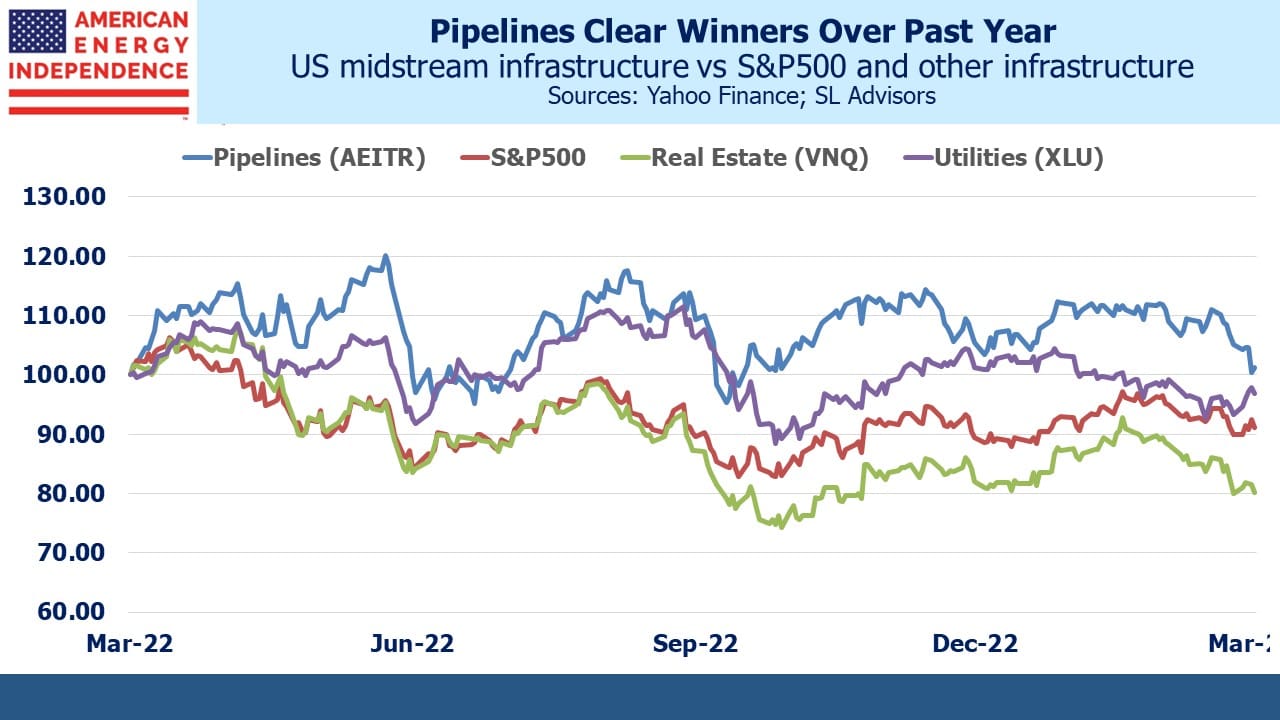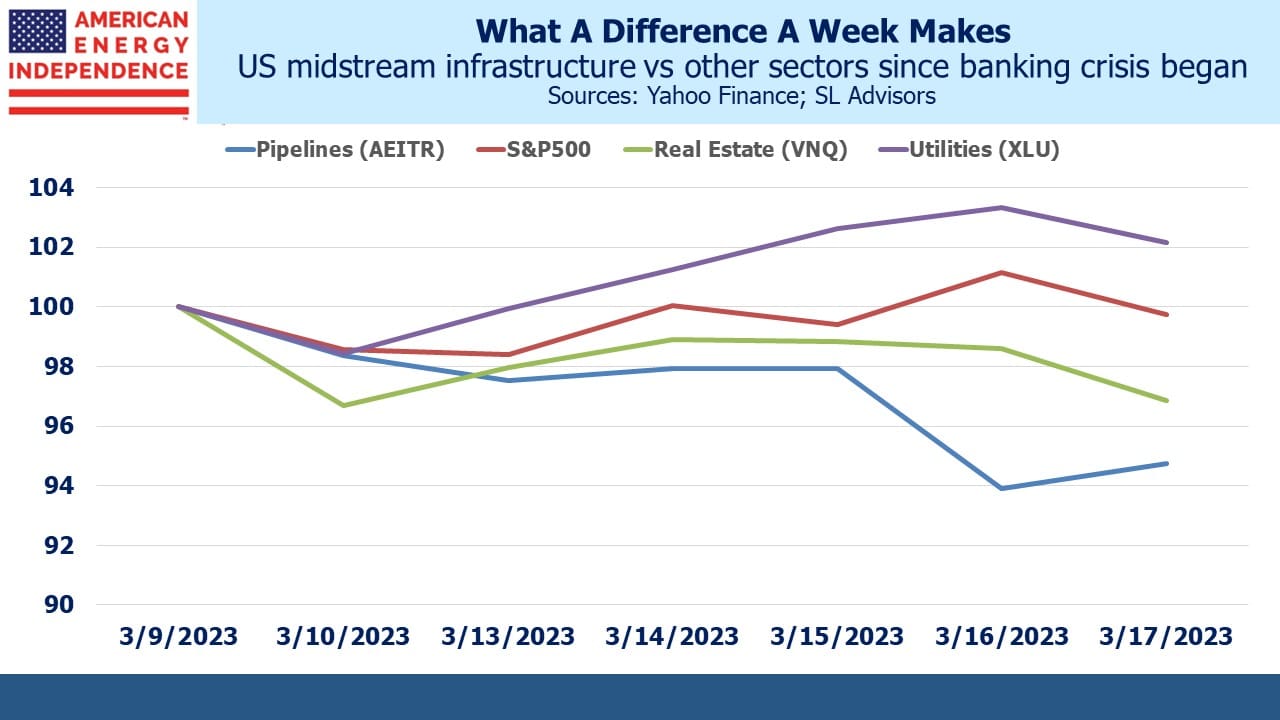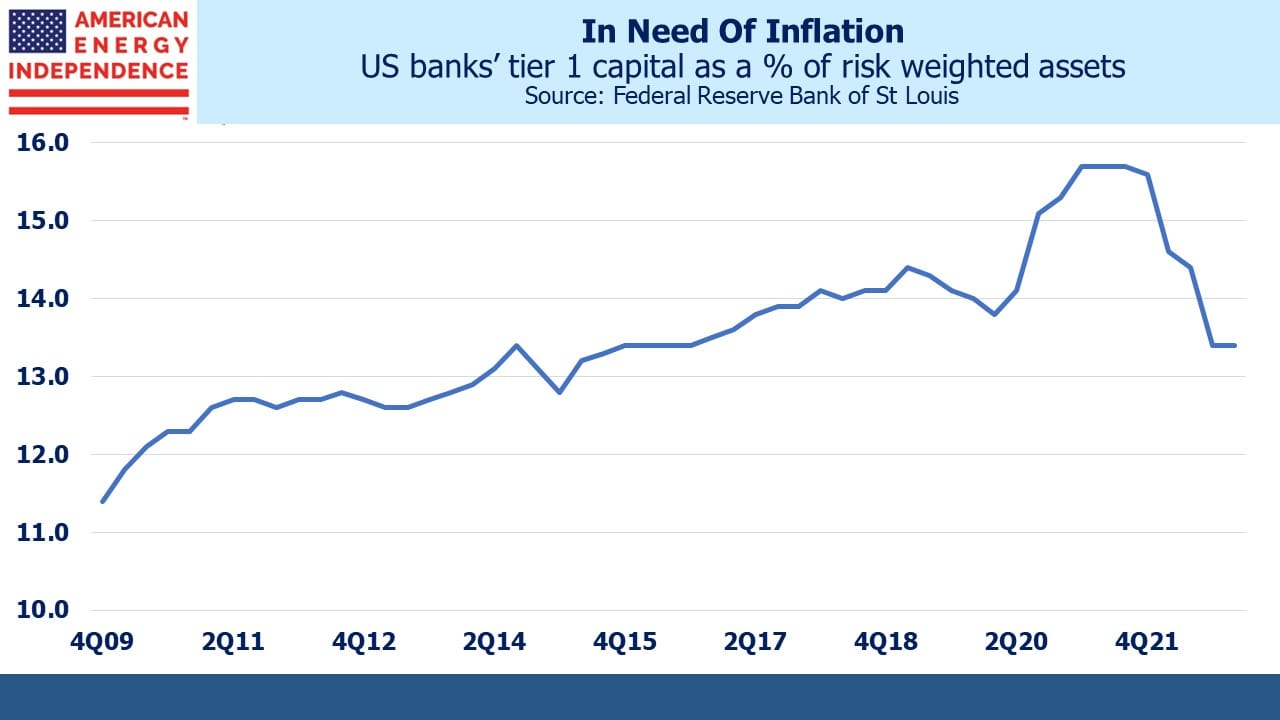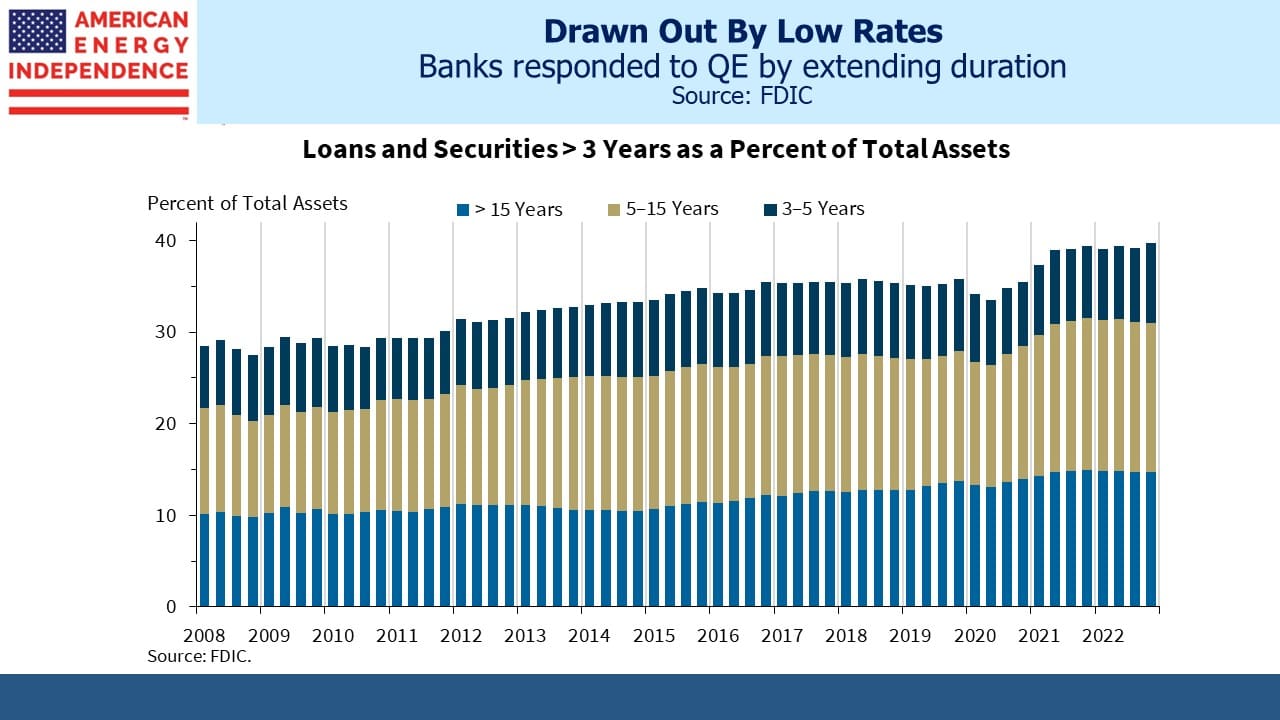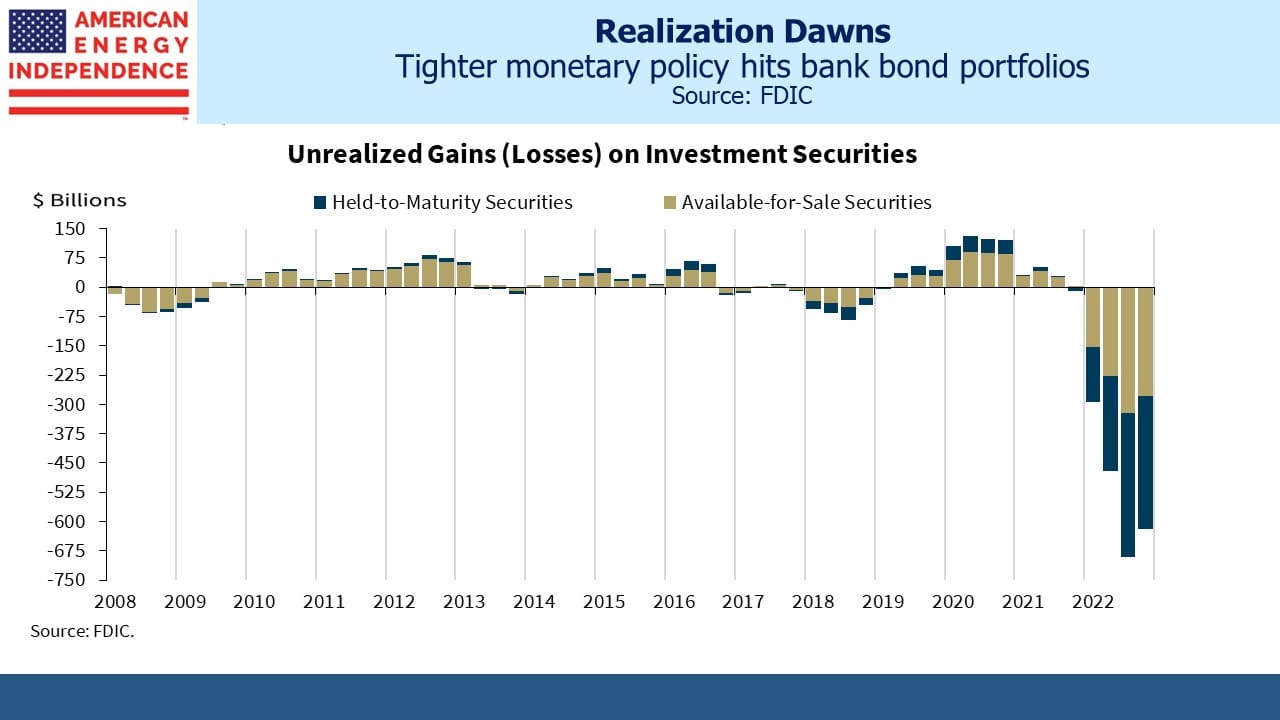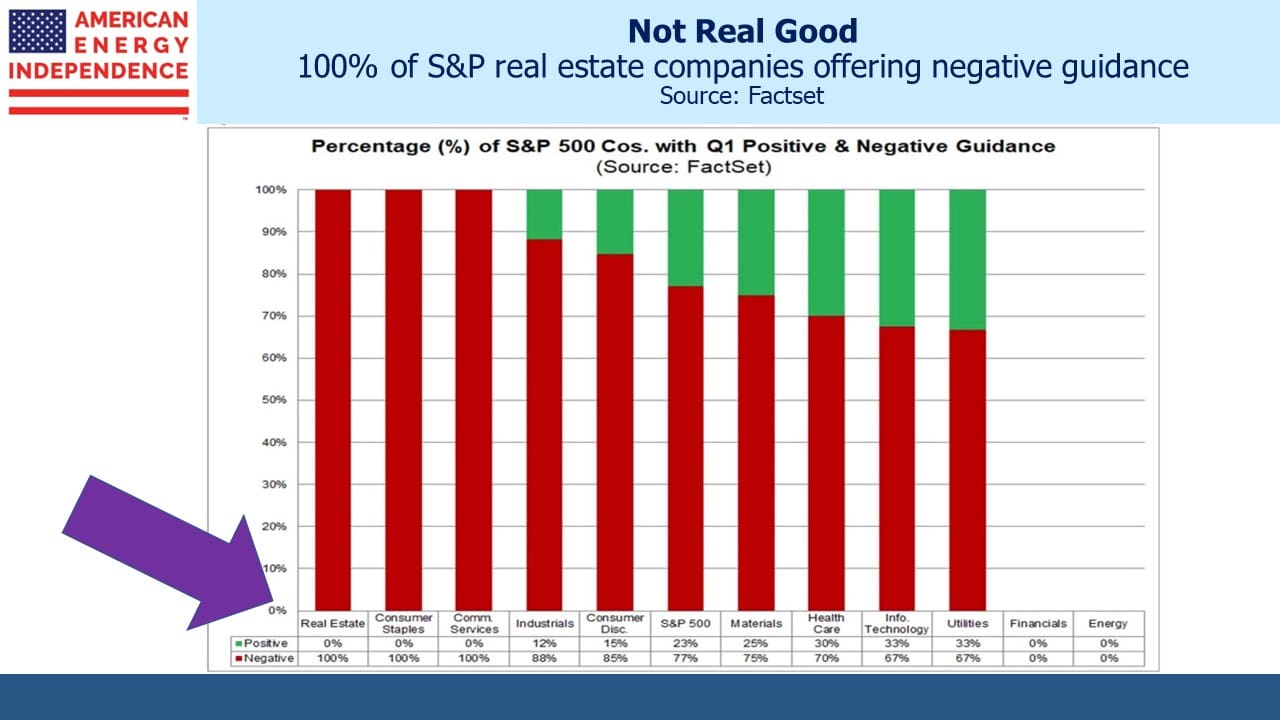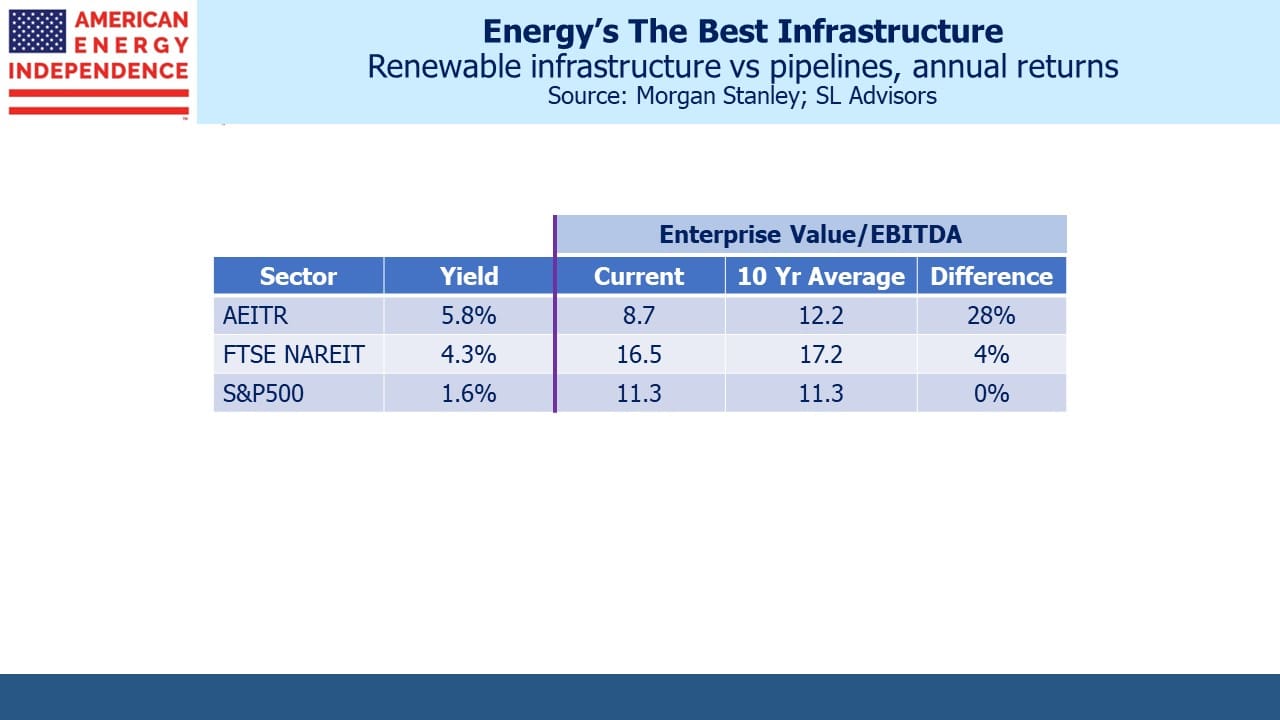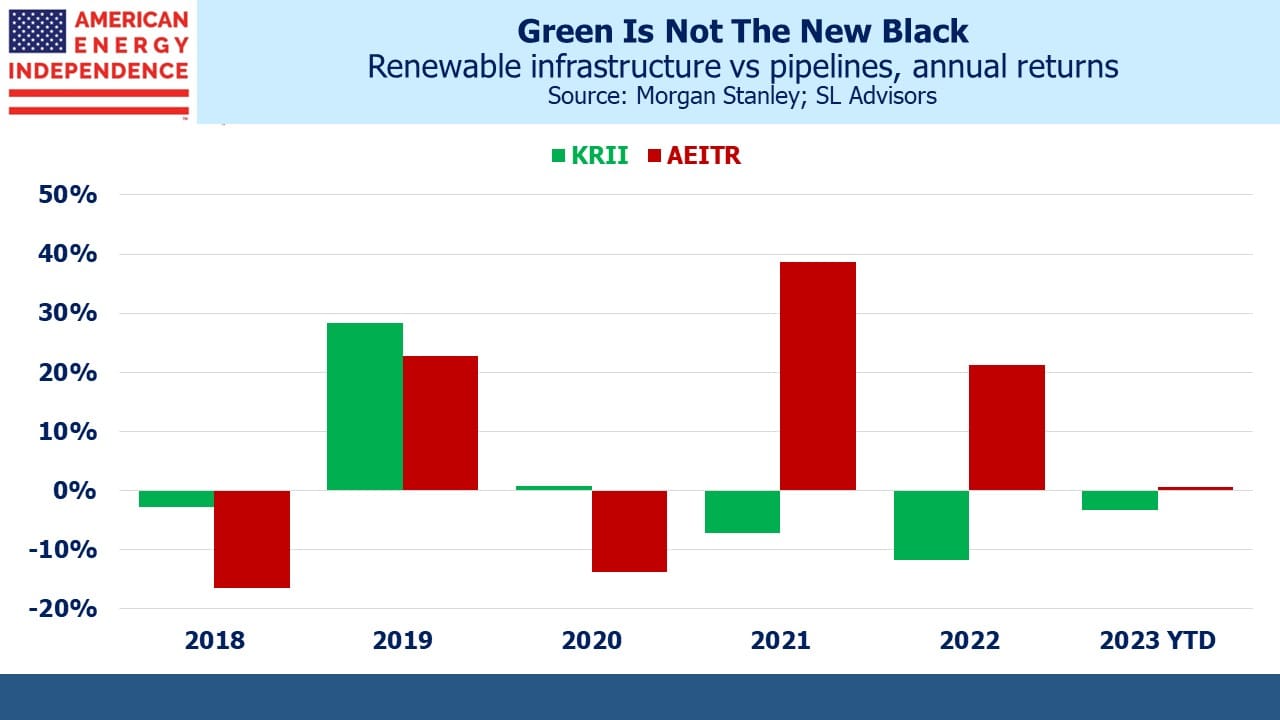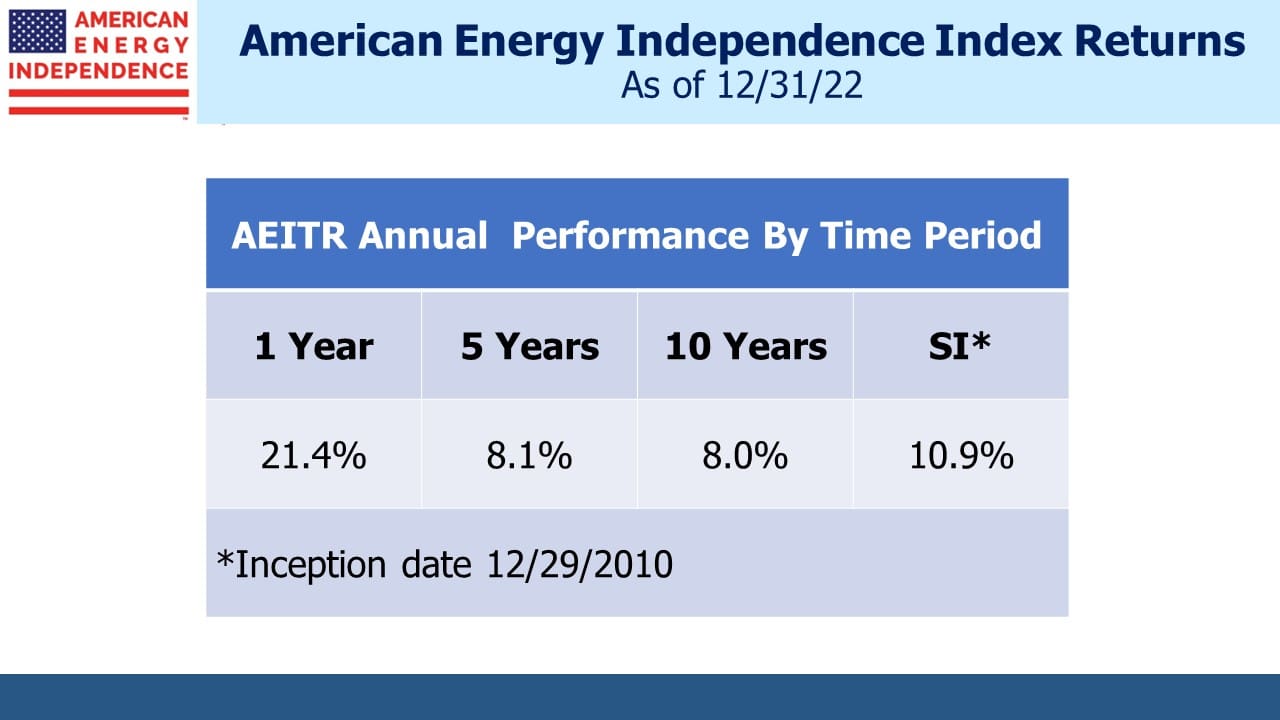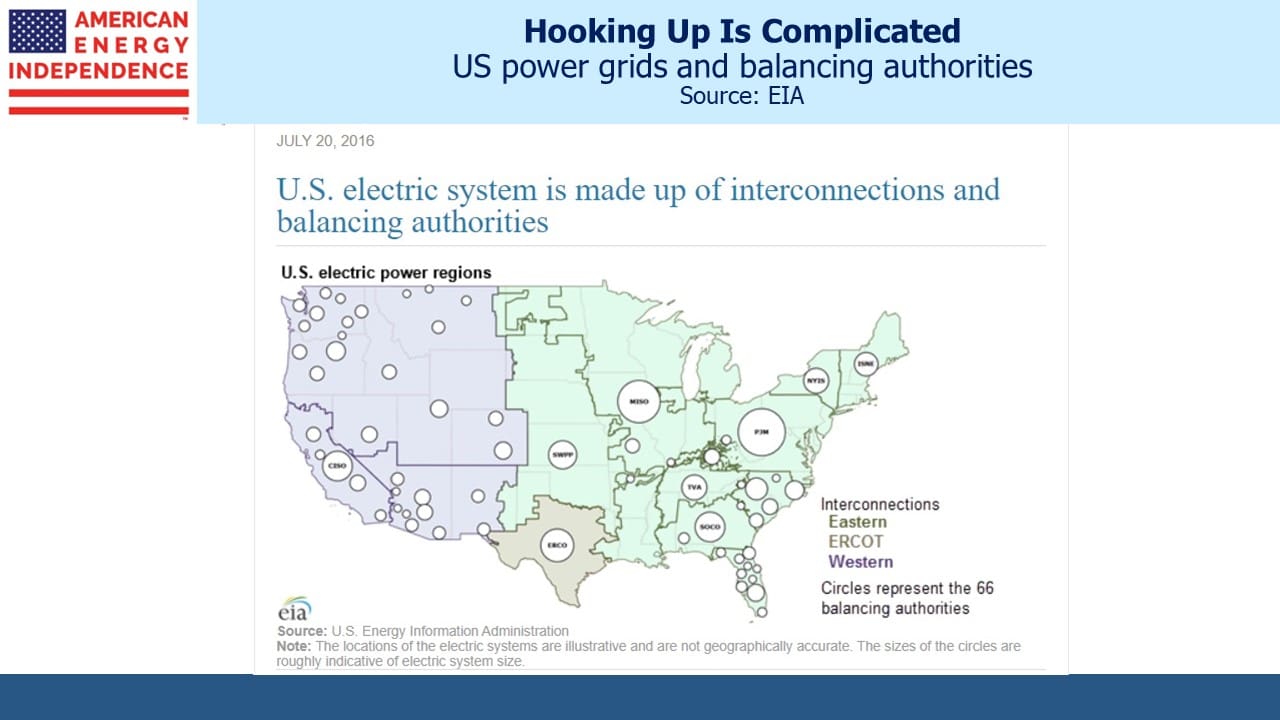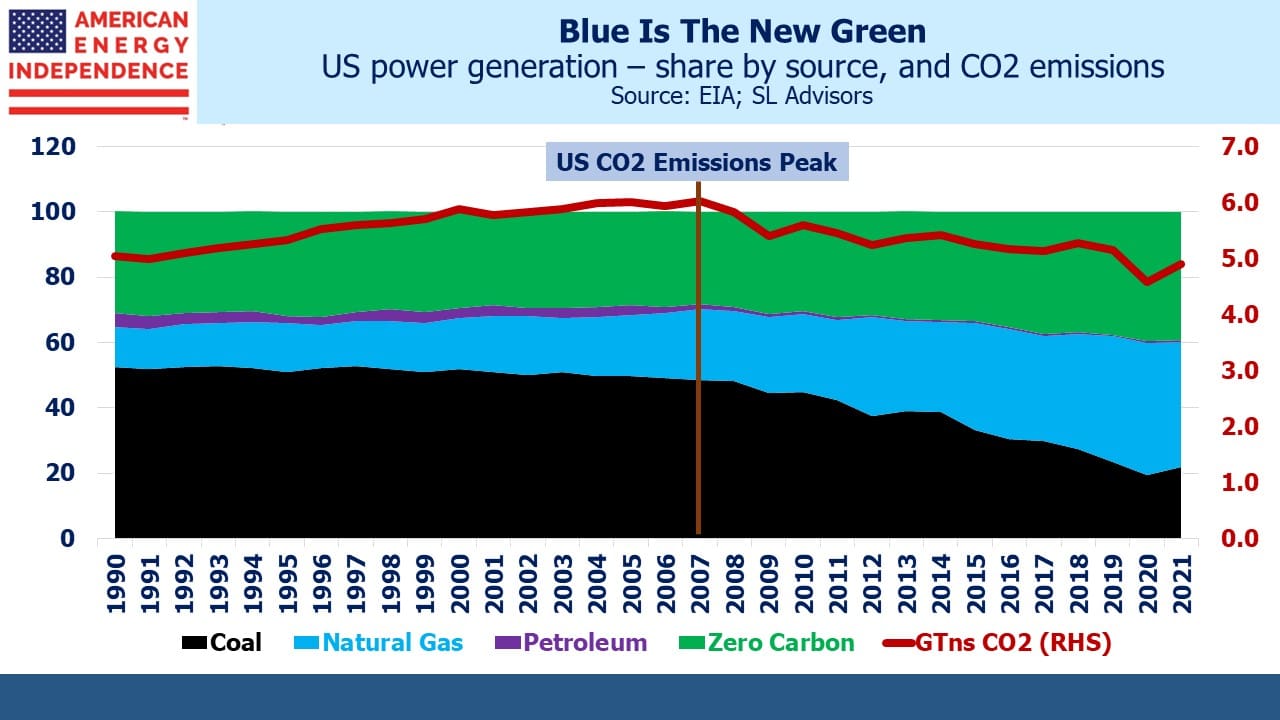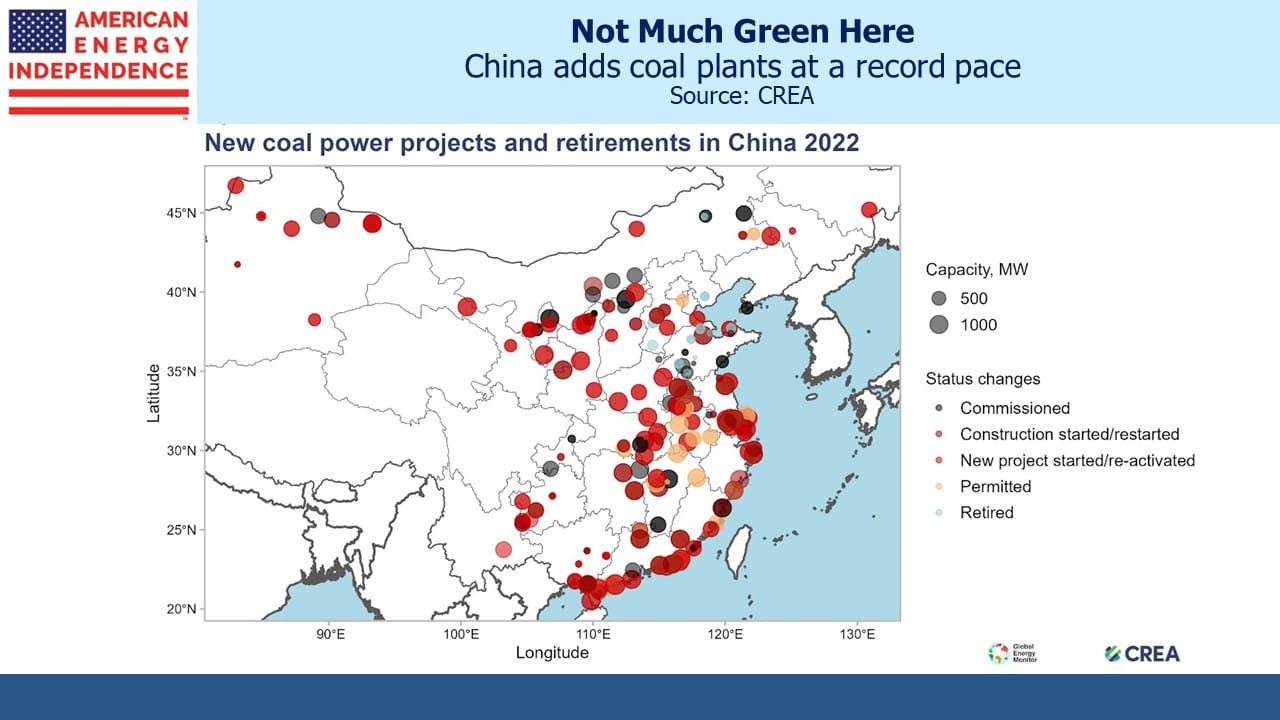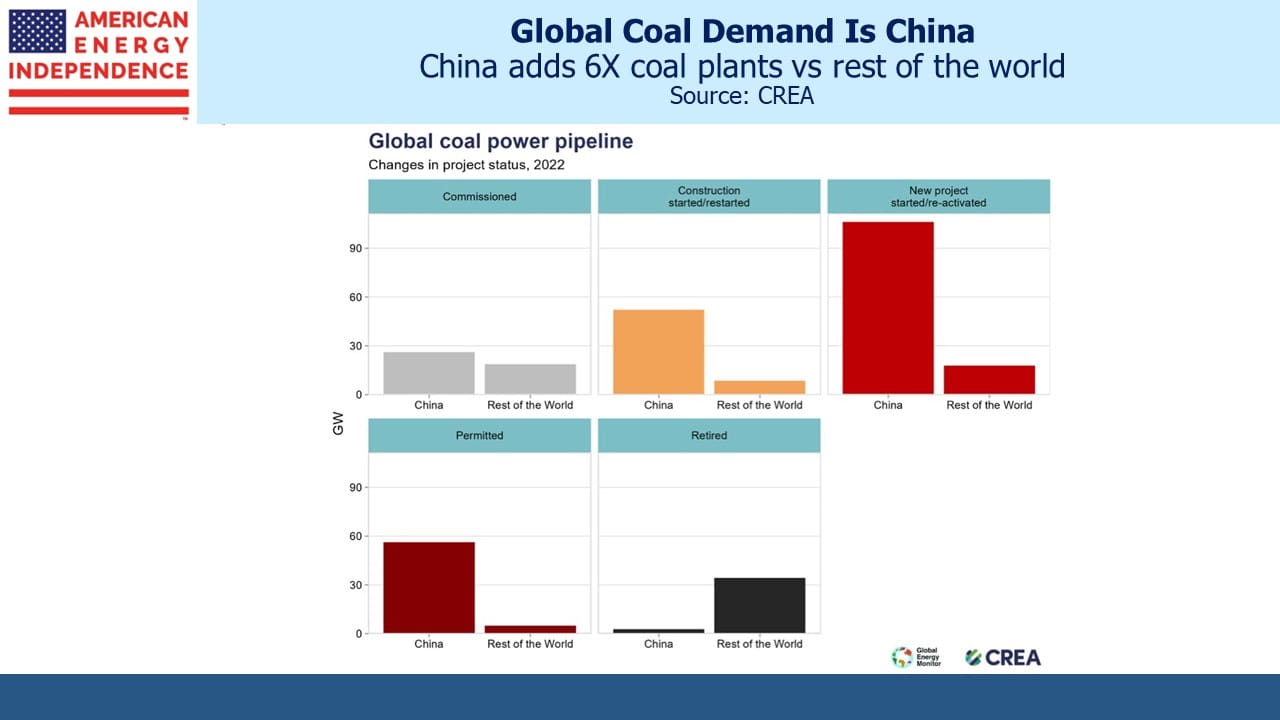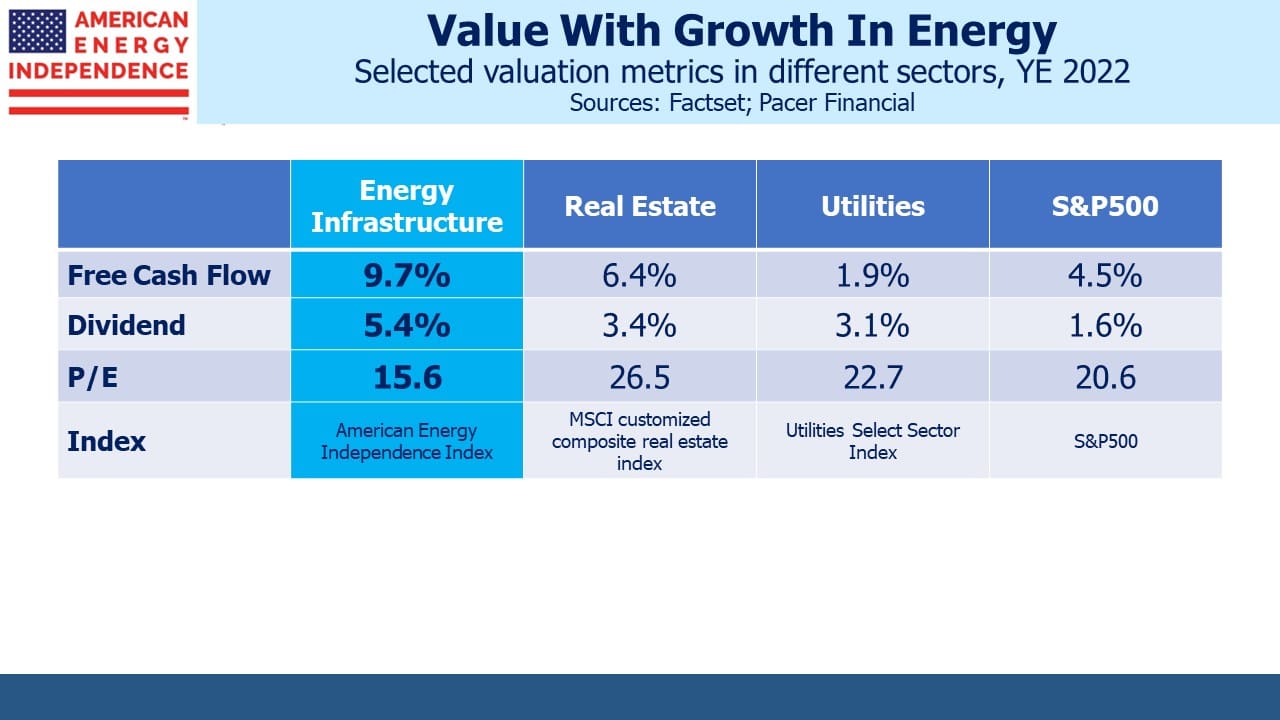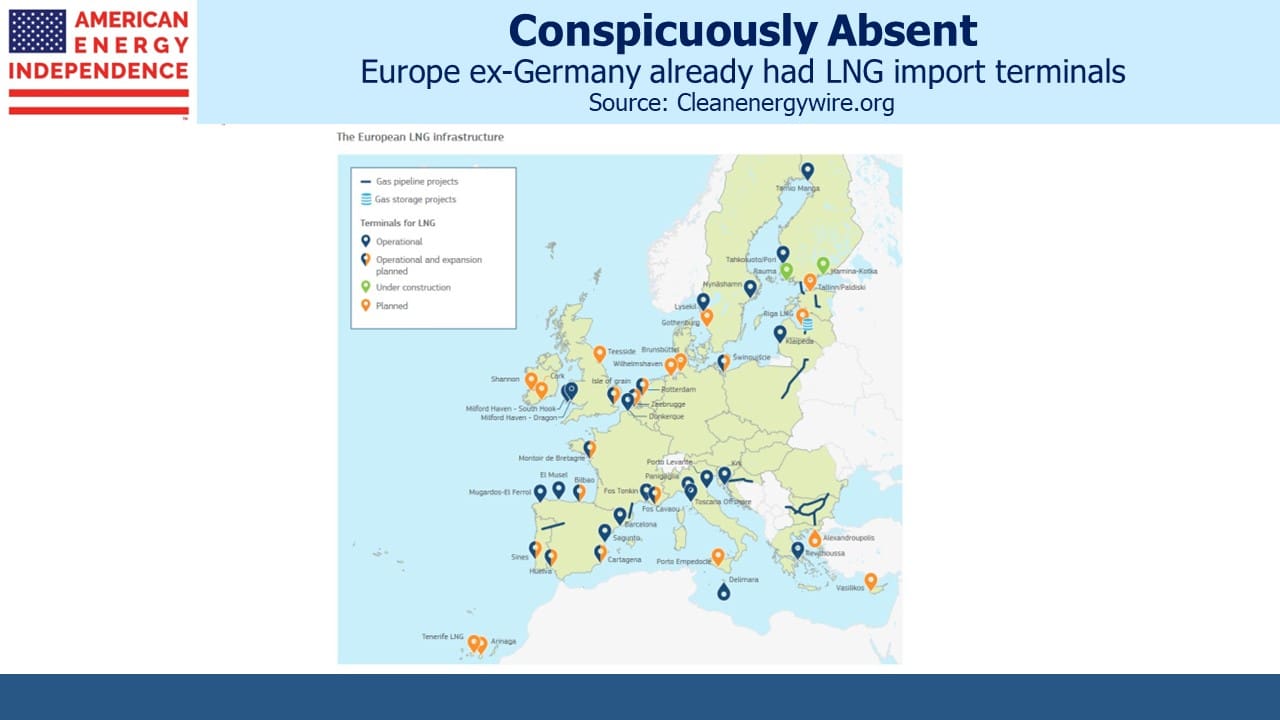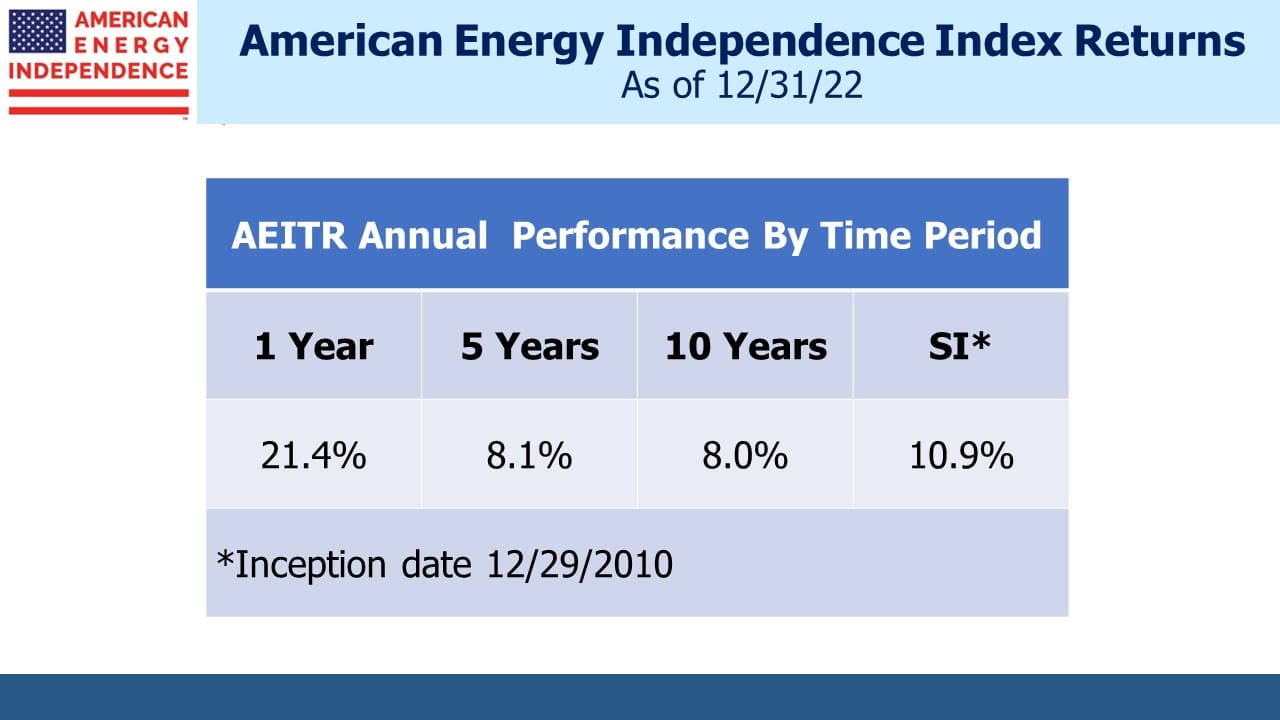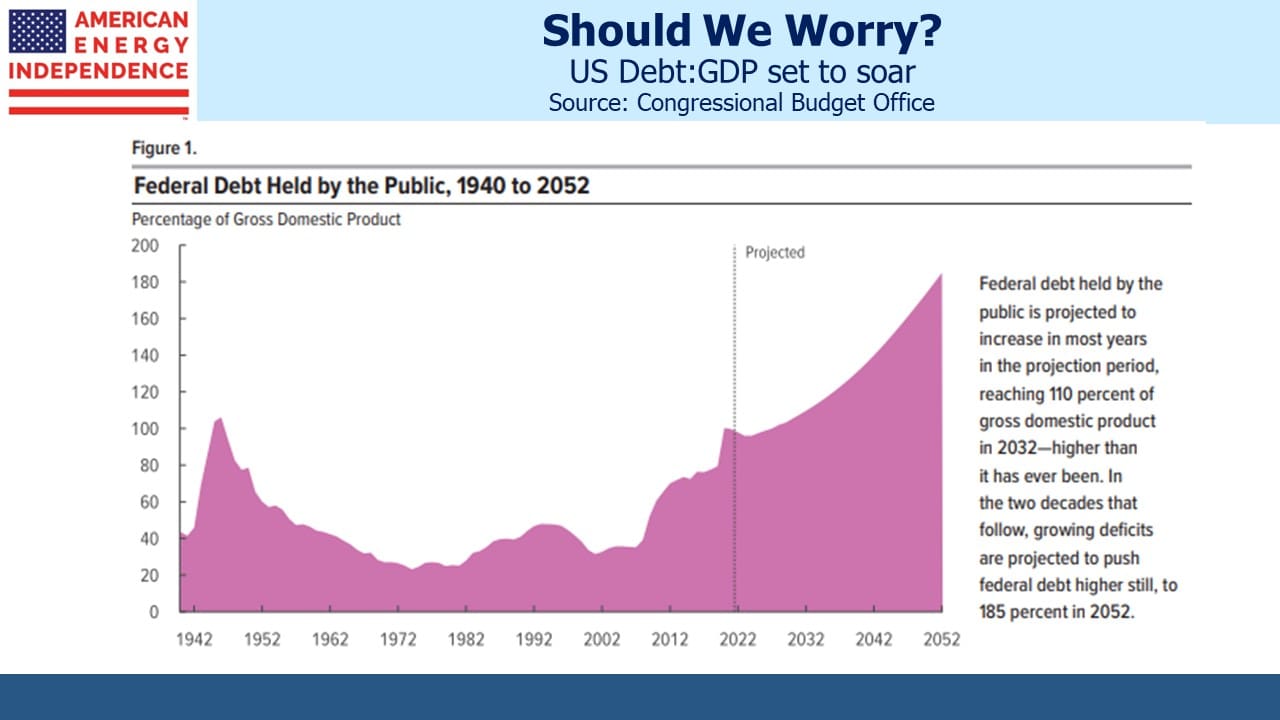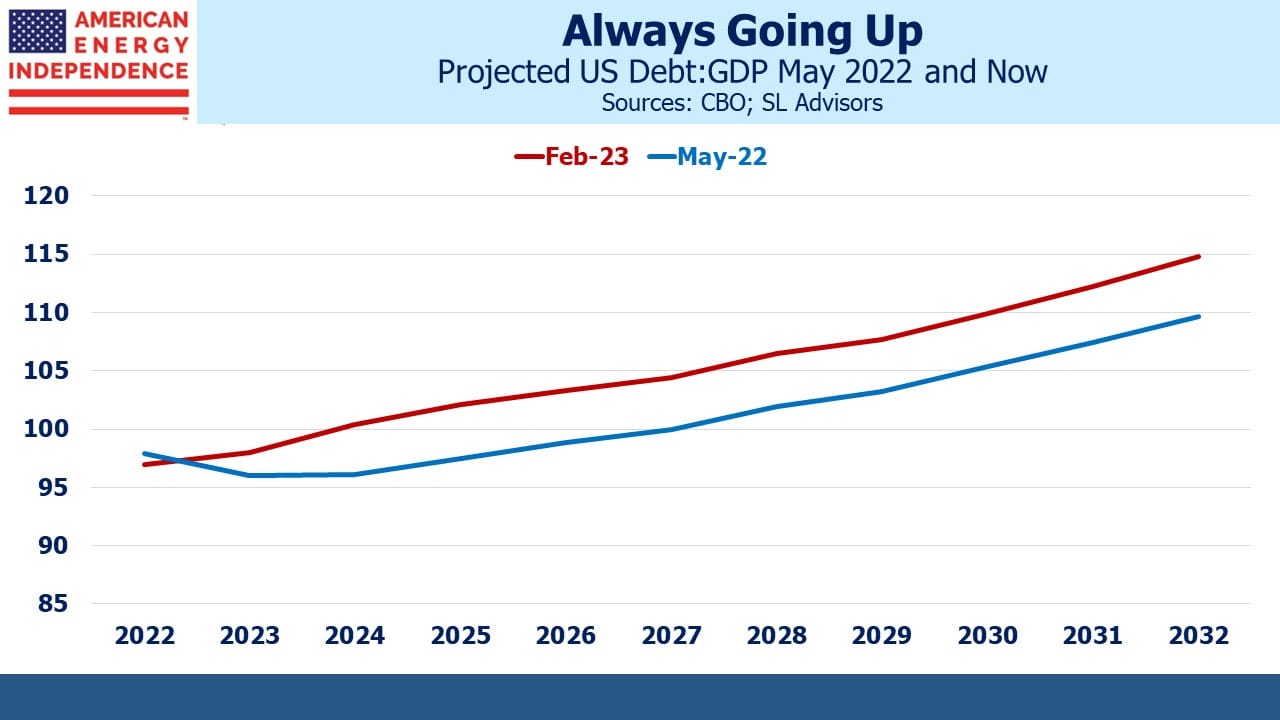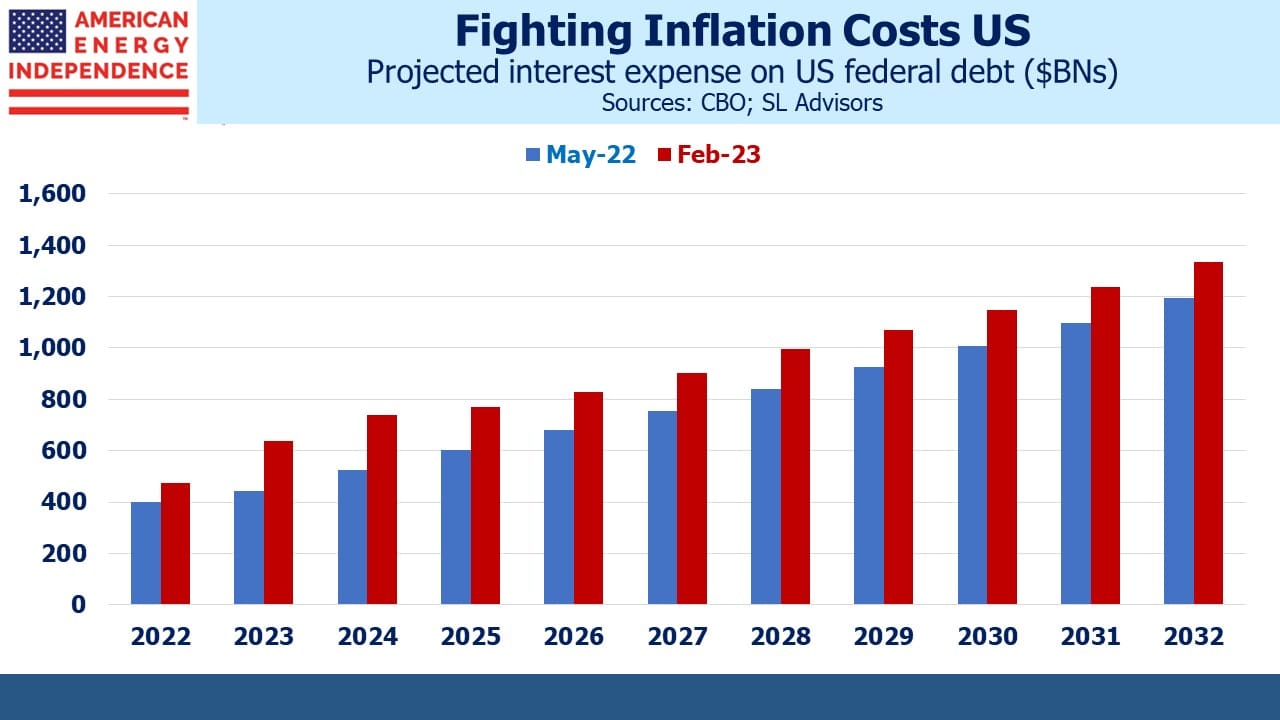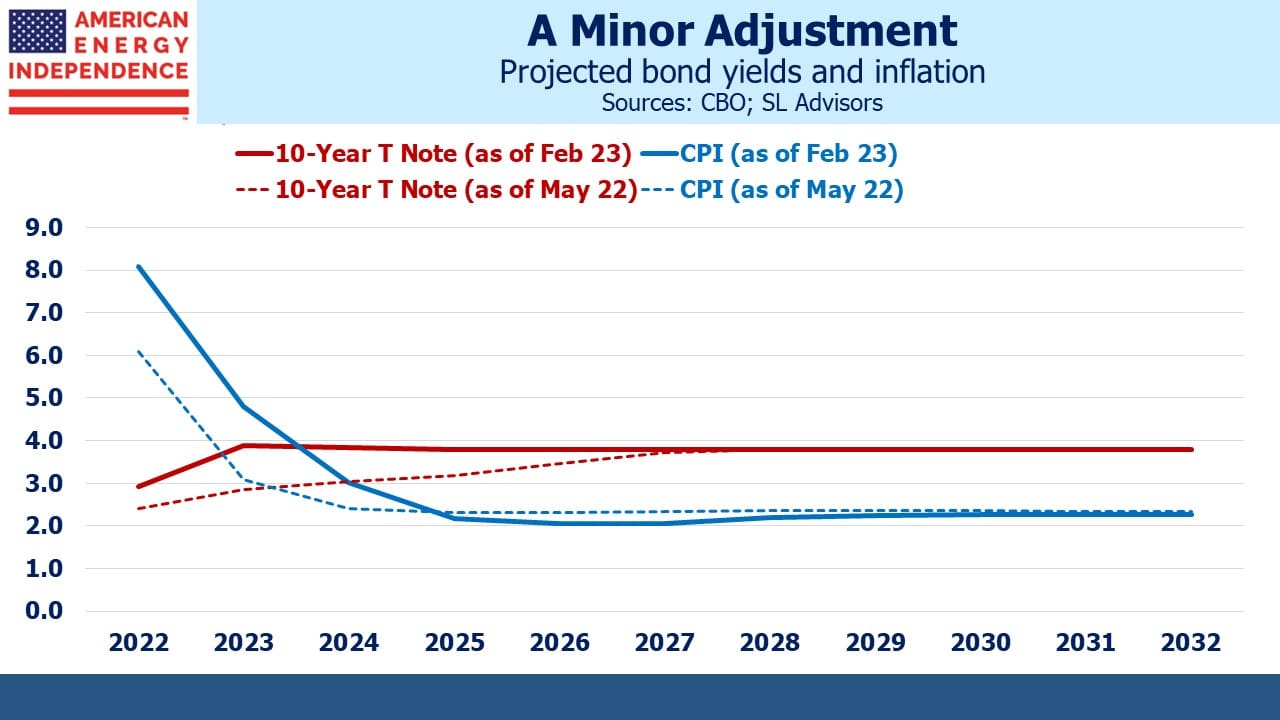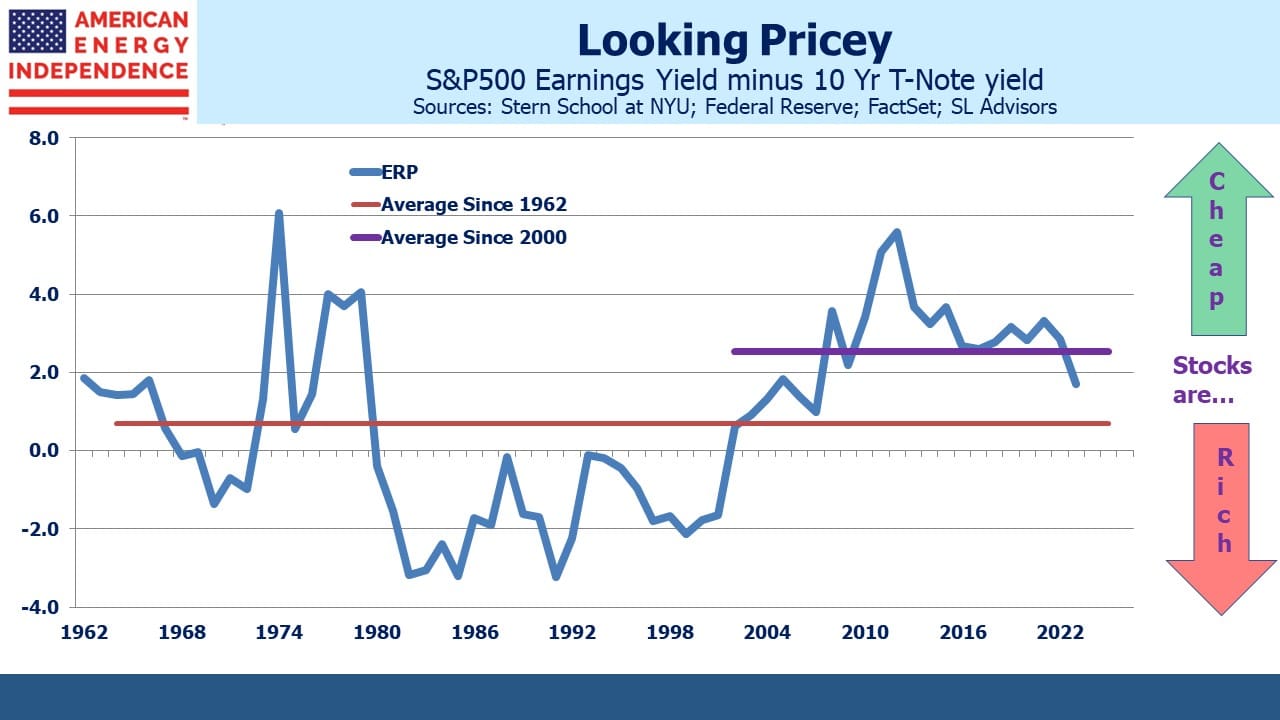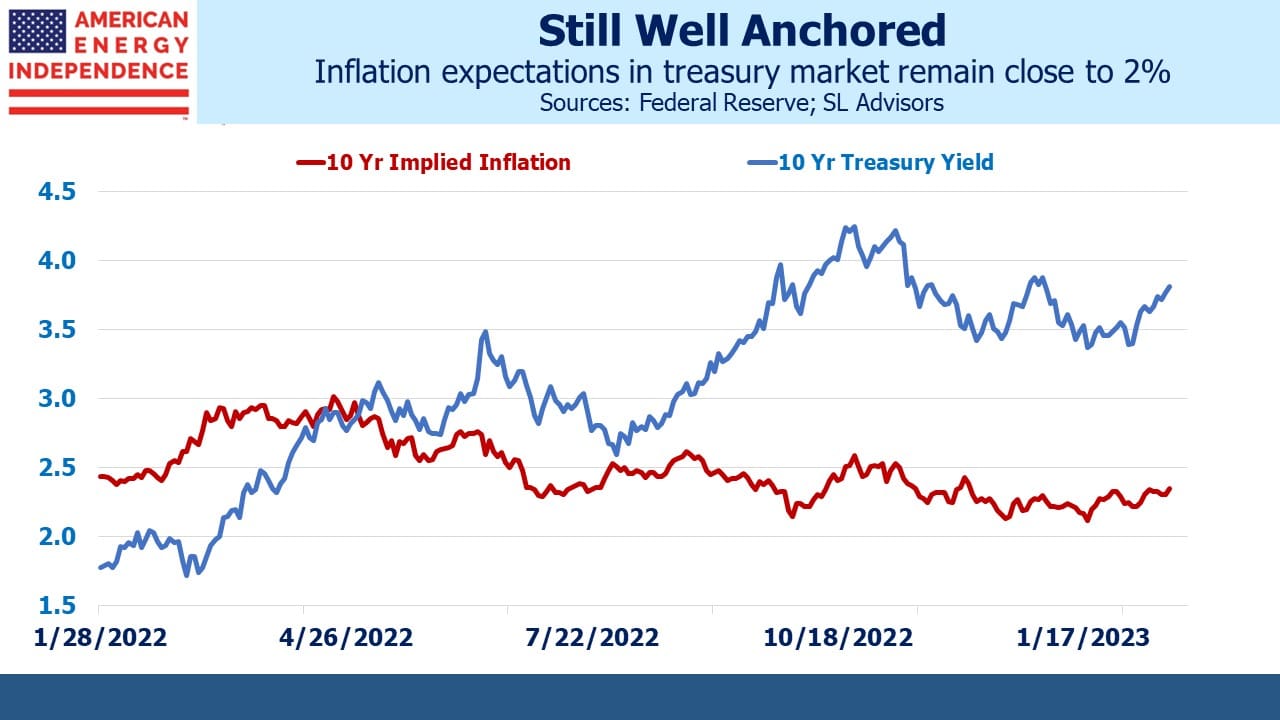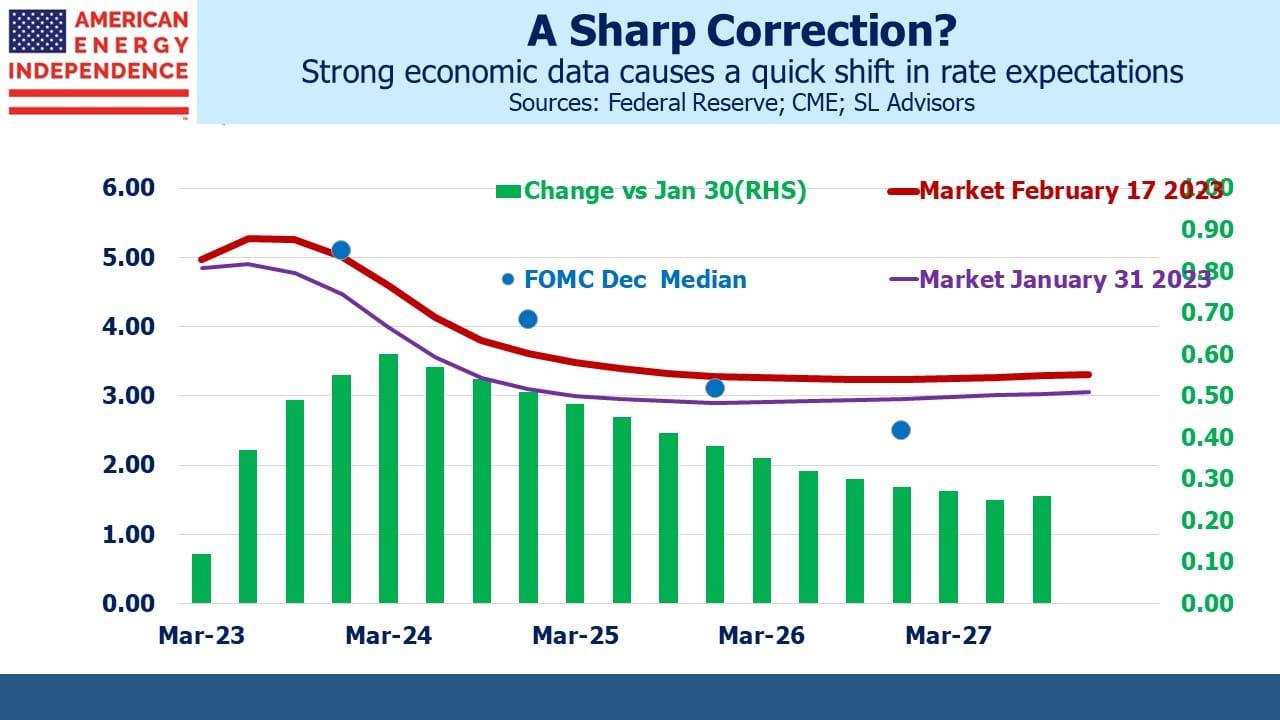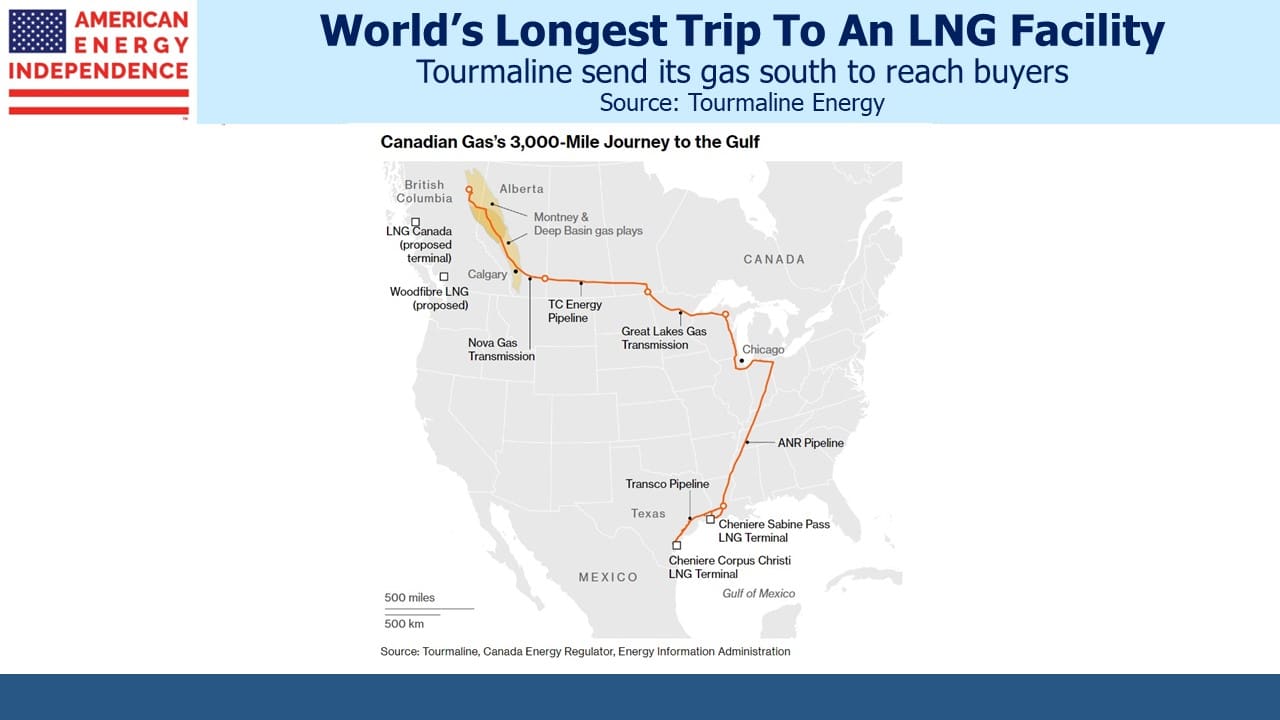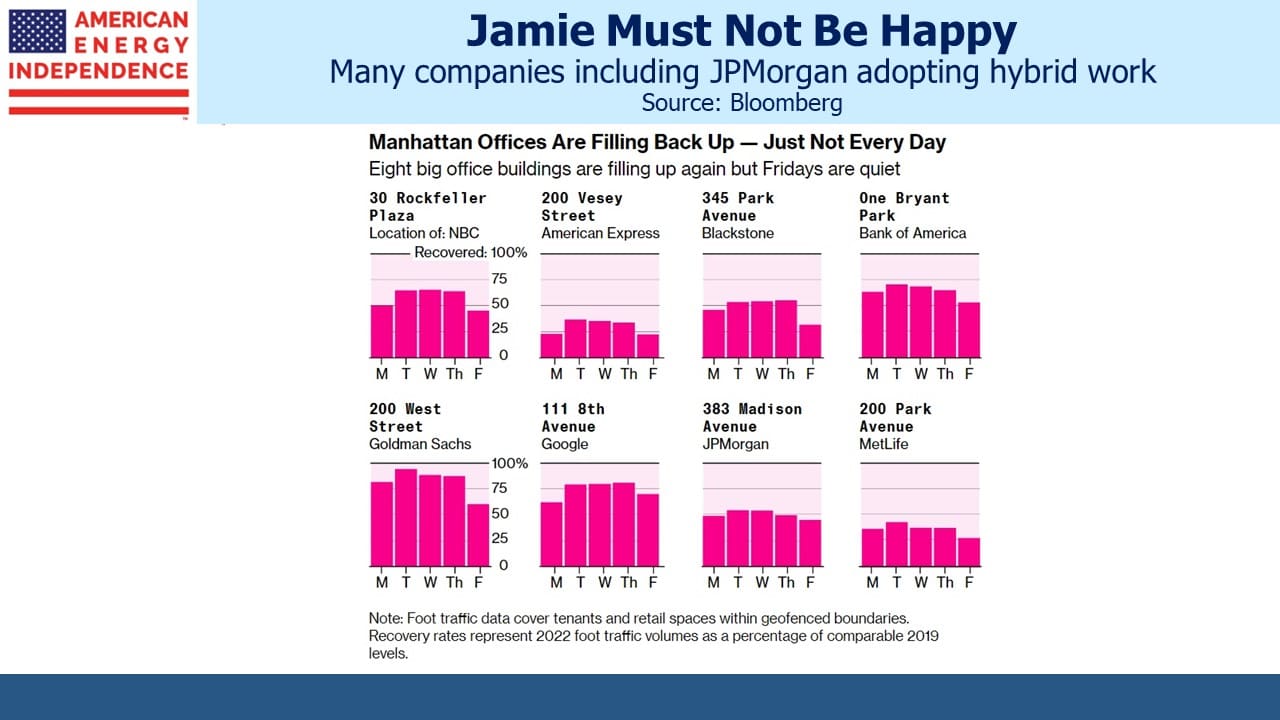Banking Crisis Means More Inflation Risk

Investors have reacted to the aftermath of Silicon Valley Bank’s (SVB) failure by assuming tighter credit conditions. This makes sense over the near term. The US banking system has been increasing duration risk, and while SVB was more reckless than most they were not alone.
Piling into long term government bonds and mortgage-backed securities required minimal amounts of capital because interest and principal are guaranteed. In perusing the Fed’s most recent stress tests, it’s clear a sharp jump in interest rates wasn’t given much consideration. Guided by the 2008 financial crisis, regulators focused on a sharp drop in equity markets, real estate and employment along with widening credit spreads.
In the interest rate stress test scenario, US interest rates are modeled to increase from 0.12% to 0.52% out along the yield curve. Regulators clearly focused on a slump in economic activity. The worst they could conceive of the bond market was a steepening of the curve led by falling prices on longer maturities. Stress scenarios largely assume an event is followed by accommodative policy.
There is no stress test remotely like the past year. An upside inflation surprise doesn’t appear anywhere.
Consistent with fighting the last war, an inflation stress test scenario will be added, designed along the lines of what we’ve just experienced. When implemented, it will force banks to reduce their tolerance for funding long term bonds with short term liabilities. It doesn’t matter whether those deposits are guaranteed by the FDIC or not – the rates banks pay will have to be more competitive than in the past.
The Fed is still in crisis mode, but a post-mortem is bound to expose the absence of co-ordination between the Fed’s setting of monetary policy and its impact on the banking system it regulates. The most recent FOMC minutes note that, “Vulnerabilities associated with funding risks were characterized as moderate.”
Elsewhere the minutes say, “Several participants discussed the value of the Federal Reserve taking additional steps to understand the potential risks associated with climate change.” It looks as if this was more important to them than the drop in Tier 1 capital ratios across the US banking system from 15.6% to 13.4% during 2022.
Silicon Valley Bank still has no buyer, and its parent Silicon Valley Bank Group filed for Chapter 11 bankruptcy protection on Friday. We’re unlikely to see a repeat of the Great Financial Crisis (GFC) of 2008-09 when the strong bought the weak – such as JPMorgan buying Bear Stearns and Washington Mutual, and Bank of America buying Countrywide.
By 2018 the banking industry had paid $243BN in fines related to the GFC. Bank of America paid $76BN, and JPMorgan $44BN, largely related to actions by the companies they had acquired in the lead up to the GFC.
For these two and other “too big to fail” banks, placing several $BN on deposit with Republic National Bank is much less risky than buying them. It’s doubtful any bank in distress could find a commercial banking buyer because the Fed isn’t empowered to issue immunity from subsequent lawsuits.
I was working at JPMorgan in 2008 at the time of the Bear Stearns acquisition. CEO Jamie Dimon described it as doing the right thing for America, because JPMorgan was in a position to help. His sentiments were not reflected in subsequent regulatory actions or litigation. He’s been very clear that he would not do the same thing again.
Testifying on recent events before Congress will be uncomfortable for Fed chair Powell. If there isn’t a pause in the cycle of rate hikes it’ll just confirm how out of touch they are. Banks need some time to rebuild their capital. Further tightening of monetary policy won’t help. With the focus shifted from inflation and the Fed forced to adopt more cautious changes in monetary policy, medium term inflation risk has gone up. Blackstone’s Larry Fink wrote in his recent annual letter that inflation is, “more likely to stay closer to 3.5% or 4% in the next few years.”
Infrastructure, especially in the energy sector, offers the potential to protect investors since around half the sector’s EBITDA is derived from inflation-linked contracts, according to research last year from Wells Fargo.
The sector has dropped too far in response to recent events. At a time when bond yields are declining the dividend stability of pipeline companies looks more appealing to us.
Over the past year pipelines have easily beat the S&P500 and other infrastructure such as real estate and utilities. The past week has seen a minor reversal. And yet, the case for inflation protection has never been stronger in the past 40 years.
We have three funds that seek to profit from this environment:
Energy Mutual Fund Energy ETF Real Assets Fund

